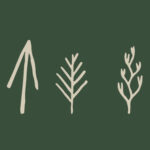Scientists to study health of reintroduced red squirrels in Highlands
The health and genetics of red squirrels reintroduced to woodlands in the Scottish Highlands by conservation charity Trees for Life are to be studied by scientists at the University of Edinburgh.
Trees for Life will send hair samples from relocated squirrels for analysis by researchers at the university’s Conservation Science Group at the Royal (Dick) School of Veterinary Studies, as part of the scientists’ research into Scotland’s wild red squirrels.
“Learning more about diseases, parasites and genetic variability is vital for ensuring a long-term future for the UK’s red squirrels. The research may also shed light on how genetic diversity is distributed across Scotland and how red squirrel populations disperse into available habitat,” said Alan McDonnell, Trees for Life’s Conservation Manager.
Dr Rob Ogden, Director of Conservation at the university’s vet school, said: ‘’The University is very happy to be providing scientific support to Trees for Life’s red squirrel reintroduction programme. We are committed to ensuring that wildlife conservation in Scotland has access to the latest scientific techniques, to increase the chances of project success over the long term.’’
Only an estimated 120,000 reds remain in Scotland, their numbers decimated by habitat loss and persecution. Despite restoration of good habitats in certain areas, reds can’t return to isolated woodlands on their own, because they avoid crossing large open spaces – so the species is missing from many suitable Highland woods.
Since 2015, Trees for Life has relocated 140 red squirrels from strongholds in Inverness-shire and Moray to isolated fragments of forest where reds would once have lived – at Shieldaig, the Coulin Estate near Kinlochewe, Plockton, Inverewe, the Reraig peninsular, Attadale, Letterewe and Gairloch.
There have been positive signs of these populations establishing at all the reintroduction sites, including successful breeding. Young squirrels have already been seen at Letterewe and Gairloch, Trees for Life’s 2018 release sites.
The reds are also dispersing well. A population has become established at Torridon, some 15 kilometres from the release site at Shieldaig – a greater dispersal distance than expected.
Red squirrels are also threatened by disease and competition from introduced non-native grey squirrels. Greys spread squirrel pox virus, to which they are immune but which is lethal to reds.
Through its The Reds Return appeal, Trees for Life is seeking funding for more reintroductions at six woodlands on the Morvern peninsula and north of the Dornoch Firth, at sites to be confirmed. This will further extend the squirrels’ range, in areas safe from disease-carrying grey squirrels and squirrel pox. It will also help pine forests to naturally expand, because reds plant new trees by forgetting where they have buried their winter stores of nuts and seeds.

